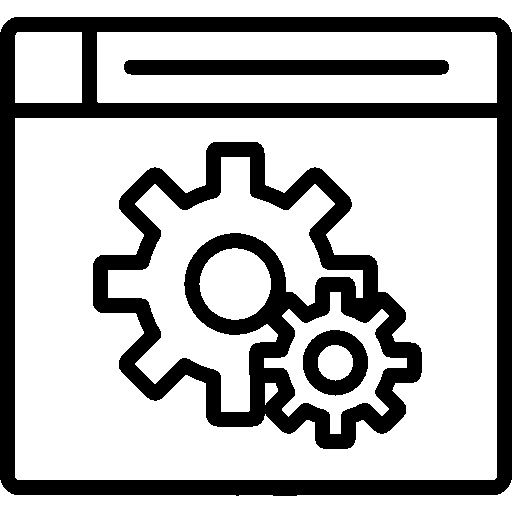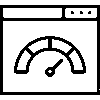- Products
- Platform
- Solutions
- Customers
- Support
- Pricing
 Website & Mobile & E-commerce
Website & Mobile & E-commerce
 CRM
CRM
 Operation & ERP
Operation & ERP
 Productivity
Productivity
 Support
Support
 Community
Community
 Learn
Learn
Application Support Point

Manage money flow by recording future payments with dates.
- Version History
- Application Features
- User Manual
- FAQ
- Community
Receivables Management
You can easily record, edit and delete incoming and outgoing receivables.
You can create term receivables by specifying a payment date or add term receivables without a payment date.
You can update existing receivables records and change customer, category, subject, amount and income item information.
Payment and Collection Procedures
You can mark receivables as paid or unpaid and easily track the collection process.
You can enter partial payments into the receivables record and view the collected and remaining balance information through the system.
You can transfer receivable records to the relevant current account and create automatic credit notes.
You can automatically calculate the late payment compensation for receivables that have passed their payment due date and add it to the receivable amount.
Filtering and Personal Settings
You can filter receivables based on criteria such as Date Range, Category, Status, Urgency, Current Transfer Status and Execution Status.
You can specify the listing method as Tab or Popup, and customize the calendar and date filters.
You can create a listing layout that suits your needs by choosing what information to display in the receivables list.
General Configuration and Settings
Users can customize the color of the app.
You can separate receivables records according to branches and manage the collection processes of each branch separately.
You can match receivables to specific revenue items and make your financial reporting more detailed.
You can specify automatic numbering settings for receivables records and define Prefix, Suffix, and Starting Number.
You can track and view authorized users who can access the application.
Definition
Receivables is an application that enables businesses to efficiently track their receivables from customers in a systematic and regular manner. It streamlines invoicing, accounts receivable tracking, customer relationship management, and collections.
Aim
The purpose of the Receivables application is to optimize financial management and cash flow for businesses. It helps safeguard financial health by ensuring receivables are collected on time and in full, while also aiming to manage and enhance customer relationships.
Key Benefits
- It protects the financial health of businesses by keeping their income and expenses balanced.
- Ensures that receivables are collected on time and in full.
- Establishes long-term relationships by increasing customer satisfaction.
- It provides accurate information to business management by reporting income and receivables status.
Login Screen of Receivables Application
This is the login screen of the Dues application.

Receivables Screen
Receivables are divided into five groups: Forward Receivables, Demand Receivables, Delayed Receivables, Deleted Forward Receivables, and Deleted Demand Receivables.
Forward Receivables

On the Due Receivables screen, Sequence, Transaction Code, Customer Information, Subject/Category, Transfer, Payment Status, Creation Date, Update Date, Accrual Date, Base, VAT, VAT Amount, Delay Compensation and Total information are displayed in a tabular form.
Current Receivables

On the Demand Receivables screen, Sequence, Transaction Code, Customer Information, Subject/Category, Transfer, Payment Status, Creation Date, Update Date, Accrual Date, Base, VAT, VAT Amount, Delay Compensation and Total information are displayed in a tabular form.
Overdue Receivables

On the Delayed Receivables screen, Sequence, Transaction Code, Customer Information, Subject/Category, Transfer, Payment Status, Creation Date, Deletion Date, Accrual Date, Base, VAT, VAT Amount, Delay Compensation and Total information are displayed in a tabular form.
Deleted Forward Receivables

On the Deleted Due Receivables screen, Sequence, Transaction Code, Customer Information, Subject/Category, Transfer, Payment Status, Creation Date, Deletion Date, Accrual Date, Base, VAT, VAT Amount, Delay Compensation and Total information are displayed in a tabular form.

On the Deleted Demand Receivables screen, Sequence, Transaction Code, Customer Information, Subject/Category, Transfer, Payment Status, Creation Date, Deletion Date, Accrual Date, Base, VAT, VAT Amount, Delay Compensation and Total information are displayed in a tabular form.
Customers' Receivables Screen
Customers are divided into two: Demand Receivables and Demand Receivables.
Forward Receivables

On the Due Receivables screen, Queue, CRIMD, Customer Information, Payment Status, Paid, and Unpaid details are listed in a tabular format. General information can be added by clicking the 'Add New' button.

On the Demand Receivables screen, Queue, CRIMD, Customer Information, Payment Status, Paid, Unpaid information are listed in a tabular form. General information is added by pressing the add new button.
Log Records
Records of transactions made in receivables records are listed.

On the Log Records screen, User Name, Record Title, Description, Process Status, and Date information are listed in a table.
Configuring Personal Settings
Kişisel Ayarlar, kullanıcının bir yazılım veya platform üzerindeki deneyimini özelleştirmesine olanak tanıyan bir modüldür. Bu tür bir uygulama, kullanıcının kendi tercihlerine göre çeşitli ayarları yapılandırabilmesini sağlar.

Alacaklar Uygulamasını özelleştirmek için Listeleme Ayarları ve Sütunlar ayarları yapılır.
Listeleme Ayarları
Detay Gösterim Yöntemi; Sekme veya Popup seçilir. Alacak Kaydı seçimine göre açılır.
Varsayılan Takvim Filtresi; Günlük, Haftalık, Aylık, Senelik veya Tümü olarak seçilir. Alacak listesinin seçilen takvim filtresine göre listelenmesini sağlar.
Varsayılan Tarih Filtresi; Tahakkuk Tarihi veya Oluşturma Tarihi seçilir. Alacak listesinin seçilen tarih filtresine göre listelenmesini sağlar.
Sayfalamada Kayıt Sayısı; 25, 50, 100, 250 veya 500 olarak seçilir. Alacak liste sayfasında gösterilecek kayıt sayısının seçimi yapılır.
Sütunlar
Alacak liste sayfasında gösterilecek tablo başlıklarının seçimi yapılır.
Sıra
Hareket Kodu
Belge Kodu
Müşteri Bilgisi
Konu/Kategori
Aktarım
Oluşturma Tarihi
Güncelleme Tarihi
Tahakkuk Tarihi
Vade Tarihi
Silme Tarihi
Durum
Fiyat
Gecikme Tazminatı
Toplam
Yukarıda listelenen sütun maddeleri tercihe göre seçilerek kaydedilir.
Filtering
Filtreleme, uygulamada belirli kriterlere göre verileri listelemek için kullanılır. Kullanıcıya yalnızca ilgili veya uygun verileri sunmaya yardımcı olur.

Filtreleme ayarları ekranında Tarih Aralığı, Tahakkuk Edilmemiş Kayıtlar, Kategori, Durum, Aciliyet, Cari Aktarım Durumu, İcra Durumu alanları seçilerek filtreleme yapılır.
Sıralama; ID, Müşteri, Konu, Kategori, Tarih, Fiyat, Durum veya Aciliyet seçilerek sıralama yapılır.
Müşteriler ve Log kayıtları ekranında farklı filtreleme alanları mevcuttur.
-Müşteriler

Filtreleme ayarları ekranında Tarih Aralığı, Müşteri Tipi alanları seçilerek filtreleme yapılır.
-Log Kayıtları

Filtreleme ayarları ekranında Kullanıcı, Kayıt Başlığı, İlgili Kişi alanları seçilerek filtreleme yapılır.
Adding a New Receivable Record
Receivable record is defined

Customer / Staff / Students are preferred to define the receivable record.
Transaction Code, Document Code, Independent Section, Subject, Urgency, Accrual Date, Amount, Related Product information are entered. All operations are saved after completion.
Summary Screen of Receivables Information
This is the screen where summary information is displayed.

The summary screen includes Customer Information, Current Account, Related Product, Receivable Information, Status, and Description. From the Transactions menu, shortcuts such as Mark as "Paid", Partial Payment, Transfer to Invoice, Copy Receivable Record, and Delete Record can be performed.
Editing Receivables Information
This is the screen where receivables records are edited.

Customer, Transaction Code, Document Code, Independent Section, Subject, Urgency, Accrual Date, Due Date, Amount, Related Product, Description information is edited. After all transactions are completed, they are saved by pressing the Save button.
Log Records
Records of transactions made in the receivables record are listed.

The log records screen displays User Name, Record Information, Description, Transaction Status, and Date information in a table format.
Configuring General Settings
Settings can be customized based on the company's preferences by selecting options from the General Settings menu.

The application color is saved by selecting the preferred option.
If the company has multiple branches, the Receivables application can be configured separately for each branch.
Money can be transferred between accounts using the current account transfer feature.
Payment status is automatically updated based on the receivable-current transaction link.
Incomes are listed using the Income feature, and income item selection can be made mandatory.
The Related Product feature can be used, and the VAT feature is available.
Communication is streamlined with the SMS sending feature.
Receivables that have not yet reached their accrual date can remain unaccrued.
The Transfer feature allows for transfers to Invoice or Proforma.
The Delay Compensation Rate is set as a monthly percentage, and the default Maturity Accrual Date is defined in days.
Adding a Receivable Category
This is the screen where receivable categories are displayed.

Order and Receivable Information are listed in a table on the Receivable Categories screen.
The receivable category is added by pressing the Add New button.

To add a Receivable Category, Title, Relevant Current Transaction Categories and Sequence information are entered. After all operations are completed, they are saved by pressing the Save button.
Add Payment Type
This is the screen where payment types are displayed.

Header information is included on the Payment Types screen.
The payment type is added by pressing the Add New button.

Header information is entered to add Payment Type. After all operations are completed, they are saved by pressing the Save button.
Automatic Numbering
Automatic Numbering ensures that a certain field automatically increases with each new record.

Fill in the Prefix and Suffix fields as desired or leave them blank.
Give an initial value to the Automatically Increased Number field. For example, if you give 1000, the following numbers will go like 1000, 1001, 1002...
Once the value is entered, an informational preview is shown on the right.
Authorized Users
On the Authorized Users screen, users are given the required authorizations and saved.

-
How do I add a credit entry?
Click on the "Add New" button in the application. A new receivable can be added from the "Add Receivable Record" screen that opens.
Automatically assigns the Transaction Code, Document Code, Category, Subject, Urgency, Accrual Date
After entering your membership and other basic information, your membership registration will be created. -
How do I edit an existing receivable entry?
To edit a receivable record, select the relevant receivable information and click the "Edit" button. You can edit the necessary fields on the "Receivable Record Editing" screen that opens.
-
What is the difference between a term and a demand receivable?
Receivables with maturity dates are receivables with a specific payment date and are listed on the Receivables with Maturity Date screen. Receivables without maturity dates are receivables recorded without a specific payment date and are displayed on the Receivables with Maturity Date screen.
-
How do I delete a credit entry?
You can use the "Delete Record" option by opening the receivable record you want to delete from the Receivable Information Summary Screen. Deleted records are stored in the Deleted Term Receivables or Deleted Non-Term Receivables screen.
-
How can I mark a receivable as paid?
You can record your receivable as collected by using the "Mark as Paid" option on the Receivable Information Summary Screen.
-
How to record a partial payment?
You can enter the collected portion by using the "Partial Payment" option on the Transactions screen and continue to track the remaining amount.
-
How to transfer to current account?
You can transfer the receivable record to the relevant current account by using the "Transfer to Current Account" option on the Transactions screen. In this way, the receivable note is created automatically.
-
How is delay compensation calculated?
You can determine the monthly delay compensation rate by activating the "Use Delay Compensation" option on the Settings >> General Settings screen. When the payment date passes, the system automatically calculates the delay compensation and adds it to the receivable amount.
-
How can I filter my to-do list?
You can limit receivable records according to certain criteria using filters such as Date Range, Category, Status, Urgency, Current Transfer Status, Execution Status from the "Filtering" settings.
-
Can I change the default listing settings?
From the Listing Settings tab, you can customize options such as Detail Display Method (Tab or Popup), Default Calendar Filter, Default Date Filter, and Number of Records in Paging.
-
Which columns can I make visible in the receivables list?
From the Columns Settings screen, you can select and save columns such as Order, Transaction Code, Document Code, Customer Information, Subject/Category, Accrual Date, Delay Compensation, Total, according to your preference.
-
How can I change the color of the app?
You can choose your preferred color by going to the "Set App Color" section in Settings >> General Settings or enter the color code manually.
-
How can I separate receivables by branch?
You can create separate receivables records for each branch by activating the "Separate Receivables by Branch" option from the Settings >> General Settings screen.
-
Is it mandatory to define an income item?
If you activate the "Revenue Item Selection is Mandatory" option from the Settings >> General Settings screen, each receivable record must be matched with a revenue item.
-
How do I use automatic numbering?
From the Settings >> Automatic Numbering screen, you can specify the Prefix, Suffix and enter the starting number to automatically increment each new record.
-
How can I manage receivables that have not yet been accrued?
You can prevent receivables for which payment obligations have not yet started from being processed by activating the "Do not Accrue Receivables with Unexpired Accrual Dates" option from the Settings >> General Settings screen.
Questions
Ask questions and get answers from other Entranet users.

















